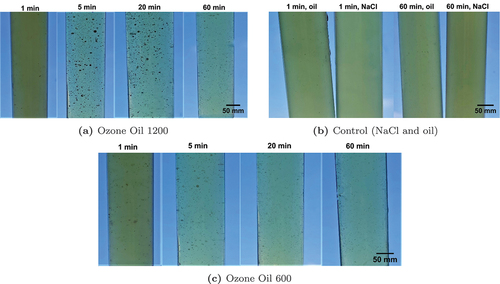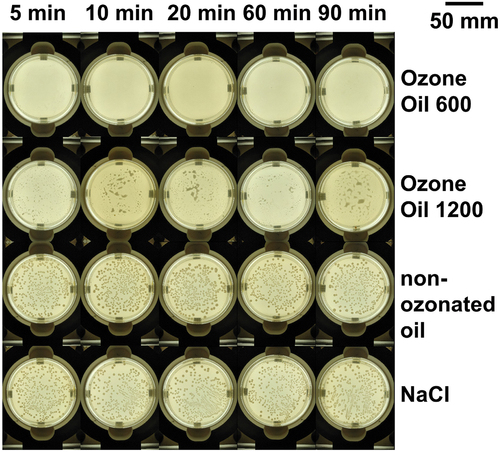Figures & data
Table 1. Counting of CFUs grown in the inhibition zone determination experiments for the emulsifier-free variant with E. coli as test strain and LB as culture medium. Ozone Oil 600 was applied as an antimicrobial agent, and non-ozonated oil and pure LB medium were employed as negative control agents. All experiments were conducted in triplicate (n = 3) and the oils (ozonated and non-ozonated) were used in three difference concentrations c1, c15, and c30.
Figure 1. Resulting tubes with E. coli as test strain for liquid medium kinetic analysis. Ozone Oil 1200 and Ozone Oil 600 are used as antimicrobial agent, non-ozonated oil and NaCl are applied as negative control agent, and LB is employed as culture medium. The exposure times are for all agents between 1 min and 60 min. As with the solid medium kinetic analysis, cloudy spots are observed for the Ozone Oil 1200.

Figure 2. Resulting Petri dishes with E. coli as test strain for solid medium kinetic analysis and different exposure times and antimicrobial agents or negative control agents. Ozone Oil 600 and Ozone Oil 1200 are compared as antimicrobial agents and non-ozonated oil and NaCl as negative control agents for exposure times of 5 min, 10 min, 20 min, 60 min, and 90 min, respectively. As culture medium 0.9% NaCl is used.

